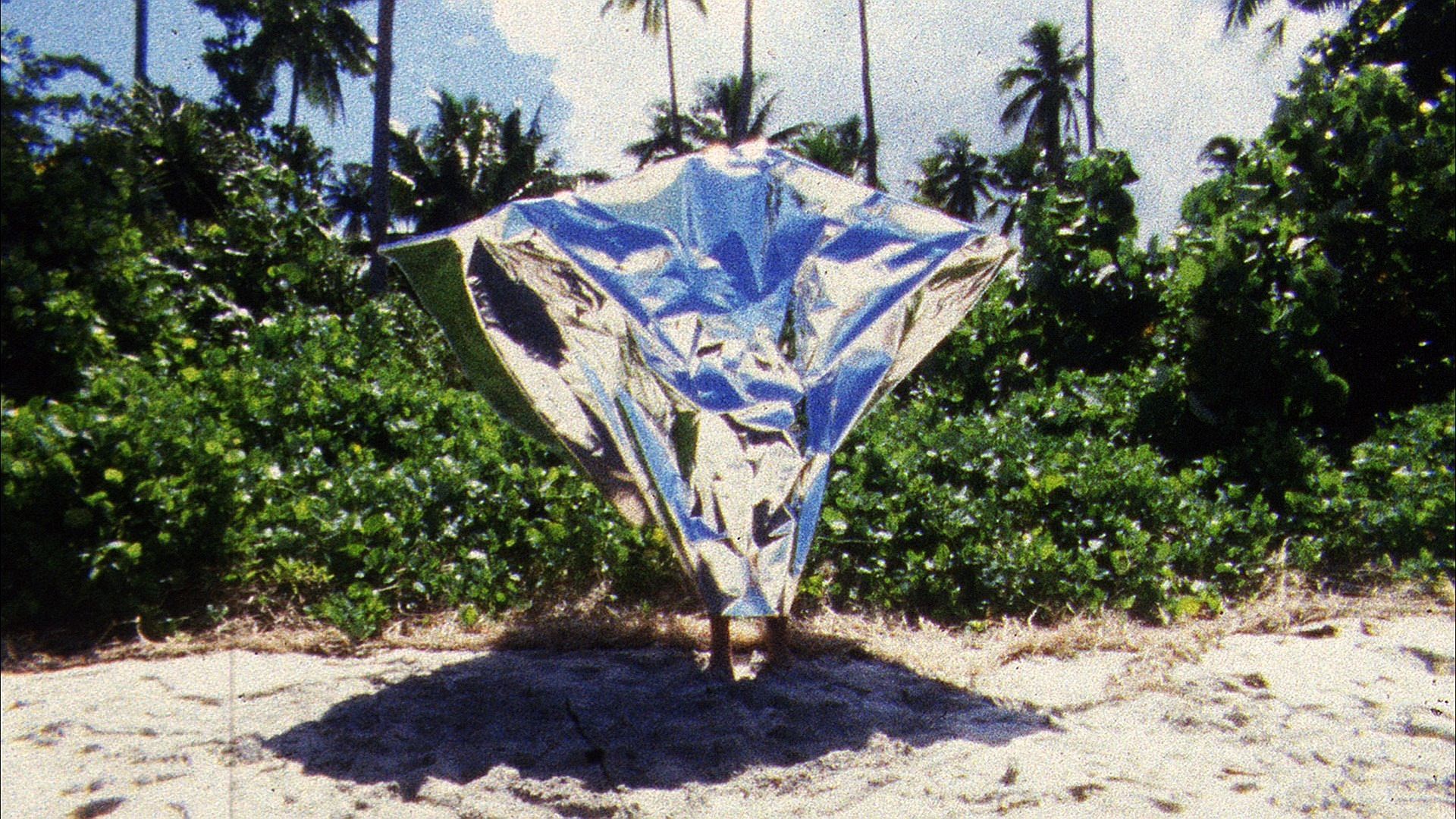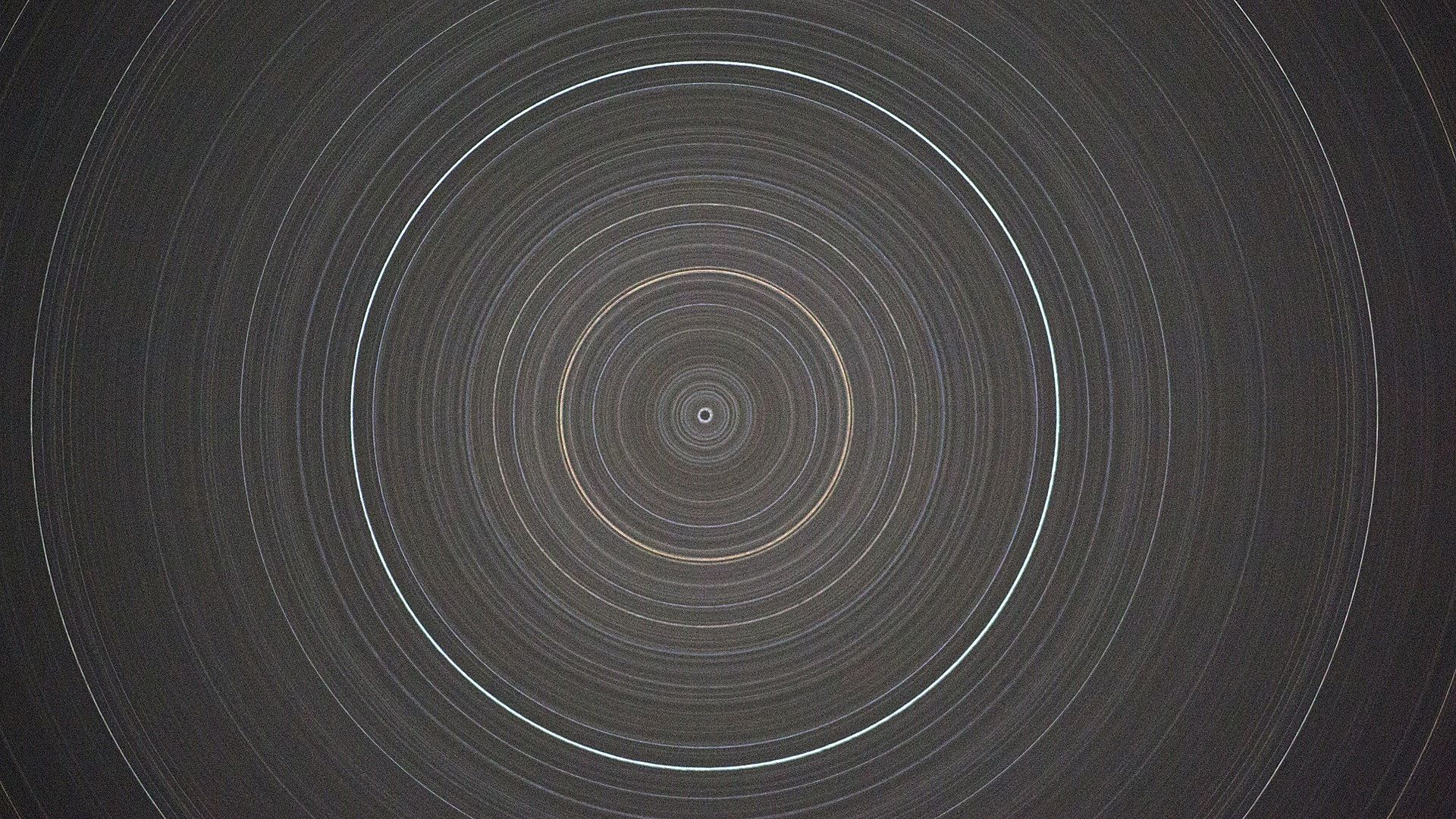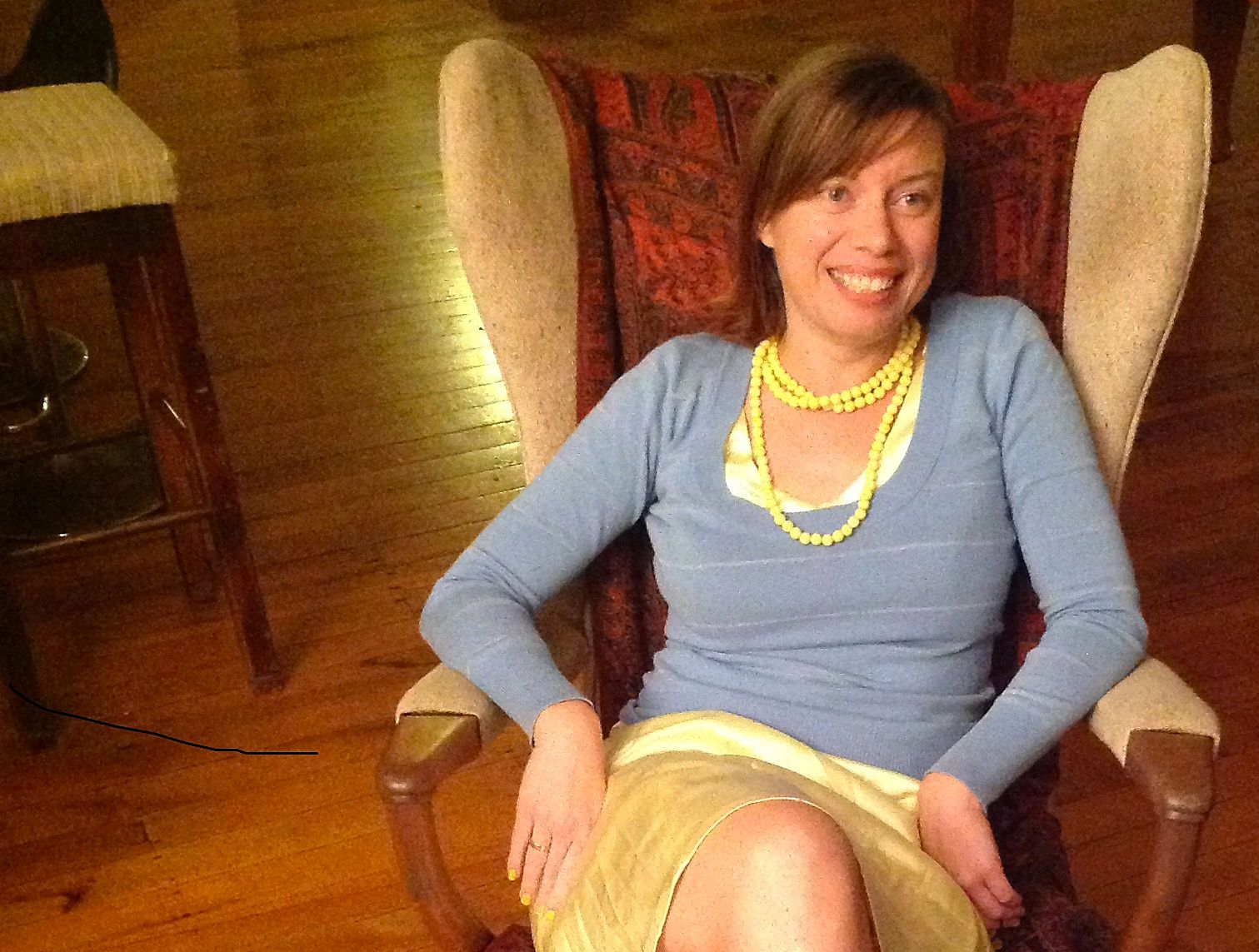First, Take Your Hydrogen: Sam Hamilton's 'Apple Pie'
Janet McAllister on Sam Hamilton's latest film, which tries to blend art and science – and succeeds.
Janet McAllister on Sam Hamilton’s latest film, which tries to spin science into art – and succeeds.
Astronomer Carl Sagan once said: “If you wish to make an apple pie from scratch, you must first invent the universe.” With Apple Pie, artist Sam Hamilton adds: “And if you wish to invent, you must first imagine.”
An 80-minute paean to the imagined, invented systems through which we obtain (or perhaps create) knowledge, Apple Pie contains phantasmagorias ranging from the amusingly hokey to the mesmerising. A father and son shadow each other like earth and moon; someone sits in a loud field of tropical green and sun; superimposed naked figures are each bathed in a different primary-colour light.
Hamilton relies on our habits of thought to produce some fun trickster effects. Someone stands, hovering in a gently rippling waterfall – in fact, he is floating in an ocean that has been tilted 90 degrees, but our gravity-reliant brains suggest otherwise. Hypnotic Saturnian rings fill the screen – in fact, the rings are the paths of stars filmed via a University of Oregon telescope (it’s a pity we only found out about this fascinating process during the screening Q&A).
Shot on 16mm film, Apple Pie’s pleasantly fuzzy images and occasional prog rock evoke a retro, even mystical feel – a messy vintage vibe. But Hamilton’s grasp of quantum physics is commendably firm. This is not the output of an artist pretending to be a scientist; instead, it is art inspired by science. Epistemology off-piste.
For instance, people in shaggy costumes run rings around each other on a grassy knoll – or rather, the shagsters run around matadors and intergalactic caryatids (it’s endearingly playful, deliberately silly). At first, I thought they represented planets revolving around stars, but they are actually sub-atomic particles performing a nuclear reaction. So, it turns out that some of the universe’s smallest waves/particles act like some of the largest celestial bodies. Or at least that’s how we schematise them. Solar systems can become atoms; just change the label on the diagram. Are we all part of a pseudo-fractal pattern: satellites spinning around a centre at different scales?
Apple Pie is ambivalent about such models. It seems to suggest that our attempt to view chaos as order is both necessary and doomed: necessary because schemas work locally and allow us to live and create; doomed because there is no ultimate, overall order. No one size fits all, so any one schema can be pushed too far.
The structure of the film exemplifies this ambivalence: it is separated into ten sections based on solar system bodies. Ten is such an ordered number; Pythagoras would be pleased. But, on the other hand, unlike the scientific schema, Apple Pie’s structure does not differentiate between the moon and the planets, and the film blithely misses out Uranus completely. The point? The scientific hierarchy of the solar system is not the only way of looking at our galactic neighbourhood. We use it because it’s helpful, but we made it up and we can always make up other categorisations, enlist other heavenly ontologies. (Hamilton indicated at the Q&A that Uranus just didn’t seem as important as some of the other solar system phenomena. Woe is thee, Uranus! Your unusual rings overlooked!)
Unsurprisingly, given that Hamilton has a considerable sound oeuvre, the soundtrack is a highlight; even over the credits we hear Amazon ambience recorded at inaudible frequencies and dialled down for our narrow ears. The initial voiceover is dense, demanding, and mostly unnecessary, but perhaps it’s there as much for its noise as for its meaning, and every so often a phrase breaks off the sheer wall of sound and makes sense: “fake furs of national borders”, for example. Hamilton is also uncompromising in his delivery of uncomfortably-pitched sound pulses and flickering light strobes, so that experiencing the film is even briefly, slightly physically painful. Energy is powerful, possibly dangerous – and, Hamilton seems to be saying, if you’re going to invent the universe, you need waves: here are some I prepared earlier.
In the rather opaque climatic Jupiter narrative, roles seem to be reversed in a cultural exchange. It is the ‘native’ who offers the briefcase and the Western hipster who offers the four phases of the moon in return (in the guise of yet more shaggy-clothed humanoids). I confess I could not create any further meaning to fit this exchange, but I did like the image of the universe-as-briefcase put into a mundane filing cabinet – and I liked the tension between this ignominious fate and Apple Pie’s next sequence: a requiem for destroyed museums and libraries; a lament, in other words, for filing cabinets of knowledge (and, as it happened, a ritual uncomplicated by any questioning of the institutions’ role as repositories of sometimes dangerous cultural and political power).
Overall, Apple Pie’s references and inspirations are wonderfully cacophonic: the pace borrows from Mau Dance’s living statues; there’s imagery from 2001: A Space Odyssey, and a recreation of the Isle of Man race from artist Matthew Barney’s Cremaster 4. But all the turbulence coalesces into at least one overarching theme: scientific knowledge doesn’t kill wonderment at the universe; it makes it stronger. Delicious.
Apple Pie is at the New Zealand International Film Festival





